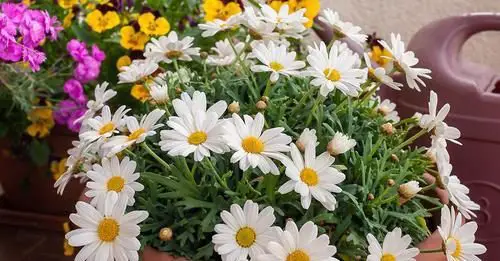The daisy, renowned for its spontaneous growth in diverse soils, serves as a harbinger of the imminent spring.
Going beyond its unassuming appearance, the daisy transcends the conventional definition of a flower, comprising a cluster of diminutive tube-shaped flowers that collectively form the distinctive yellow “flower head.” As a member of the Asteraceae family, it boasts an inflorescence of small flowers, strategically attracting a variety of insects to facilitate pollination.
In addition to its botanical intricacies, the daisy carries symbolic weight, particularly evident in the well-known “He loves me, he loves me not” game. This age-old tradition harks back to the Middle Ages, where young women utilized daisies to convey their acceptance or reservations regarding a suitor’s declaration.
Whether adorning a coat of arms or a woman’s head, the daisy played a crucial role in decoding romantic sentiments, tracing its roots to the medieval practices of Margaret of Provence.
Cultivating daisies involves a nuanced understanding of their characteristics and requirements. This perennial plant falls under various genera within the Asteraceae family, including Leucanthemum and Bellis. Notable members encompass
Leucanthemum vulgare, the classic daisy, and Leucanthemum atratum, alongside the Bellis genus, featuring the perennial Bellis or meadow daisy.
Successful cultivation of daisies thrives on full sunlight, although partial shade remains acceptable. Diverse soil types, including slightly calcareous soil, prove conducive to optimal daisy growth. Essential factors such as adequate moisture and well-drained soil contribute significantly to the flourishing of these resilient flowers. Fertilization, preferably with organic products or slow-release granular fertilizers in spring, enhances overall growth.

Careful attention to watering is paramount, necessitating three to four weekly waterings in spring and daily watering during the warmer days of summer. During the vegetative rest period, watering frequency should be reduced to once every two weeks.
Pruning demands minimal effort, focusing on the removal of decayed parts to maintain the plant’s health. While daisies, especially those in the Bellis genus, exhibit resilience, potential threats such as aphids or snails must be vigilantly addressed, particularly in the Leucanthemum genus.
A comprehensive understanding of these elements ensures that the daisy, with its enchanting simplicity, remains a dynamic and enduring presence in gardens, symbolizing the arrival of the rejuvenating spring season.
